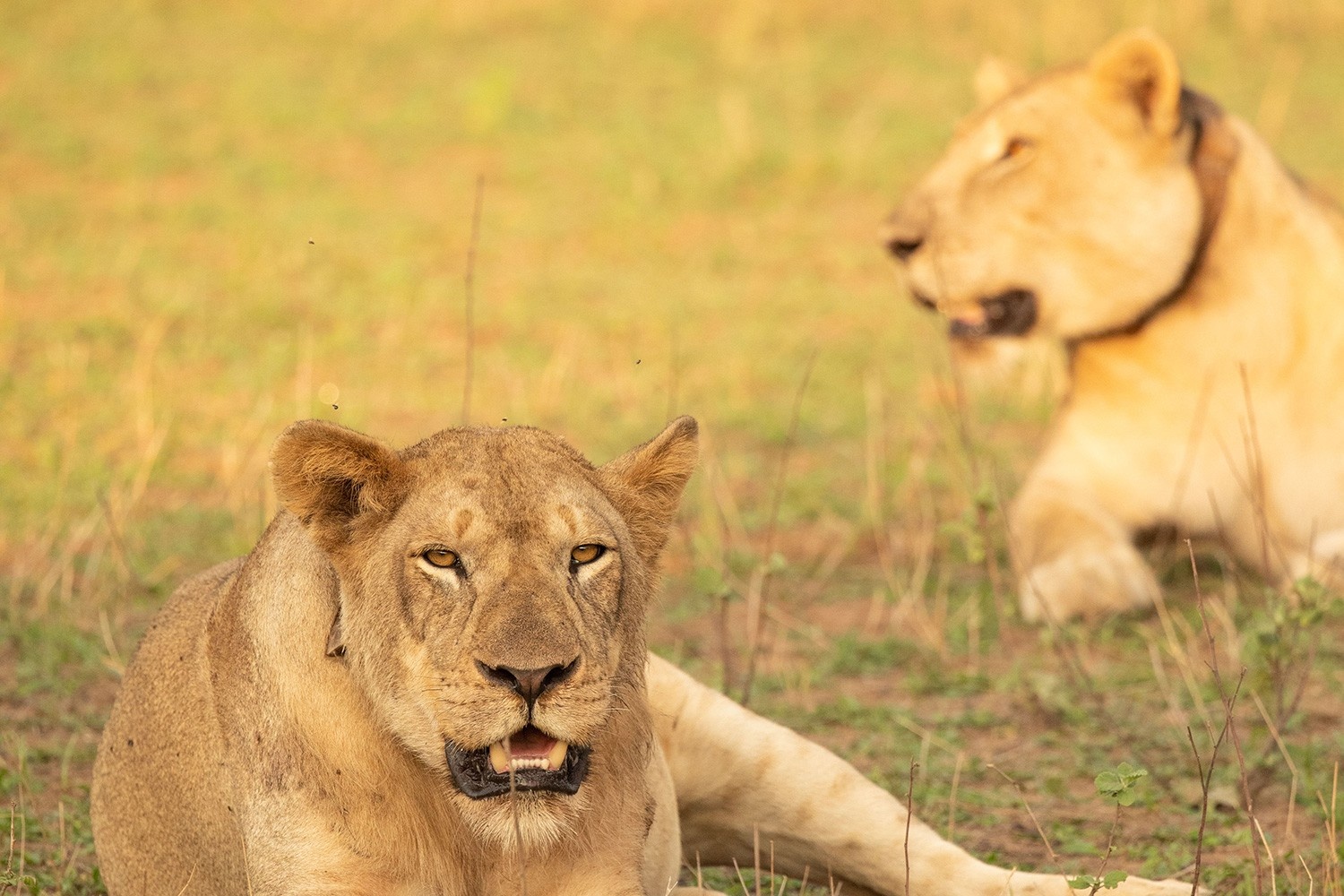NORTH STARS:
Diversity and Inclusion
Community Support
Wildlife & Ecosystems
“For nearly a decade, the roar of lions was absent from Nsumbu, and with the predators gone, the delicate balance of the ecosystem unravelled. But at the end of 2024, that silence would be broken.”
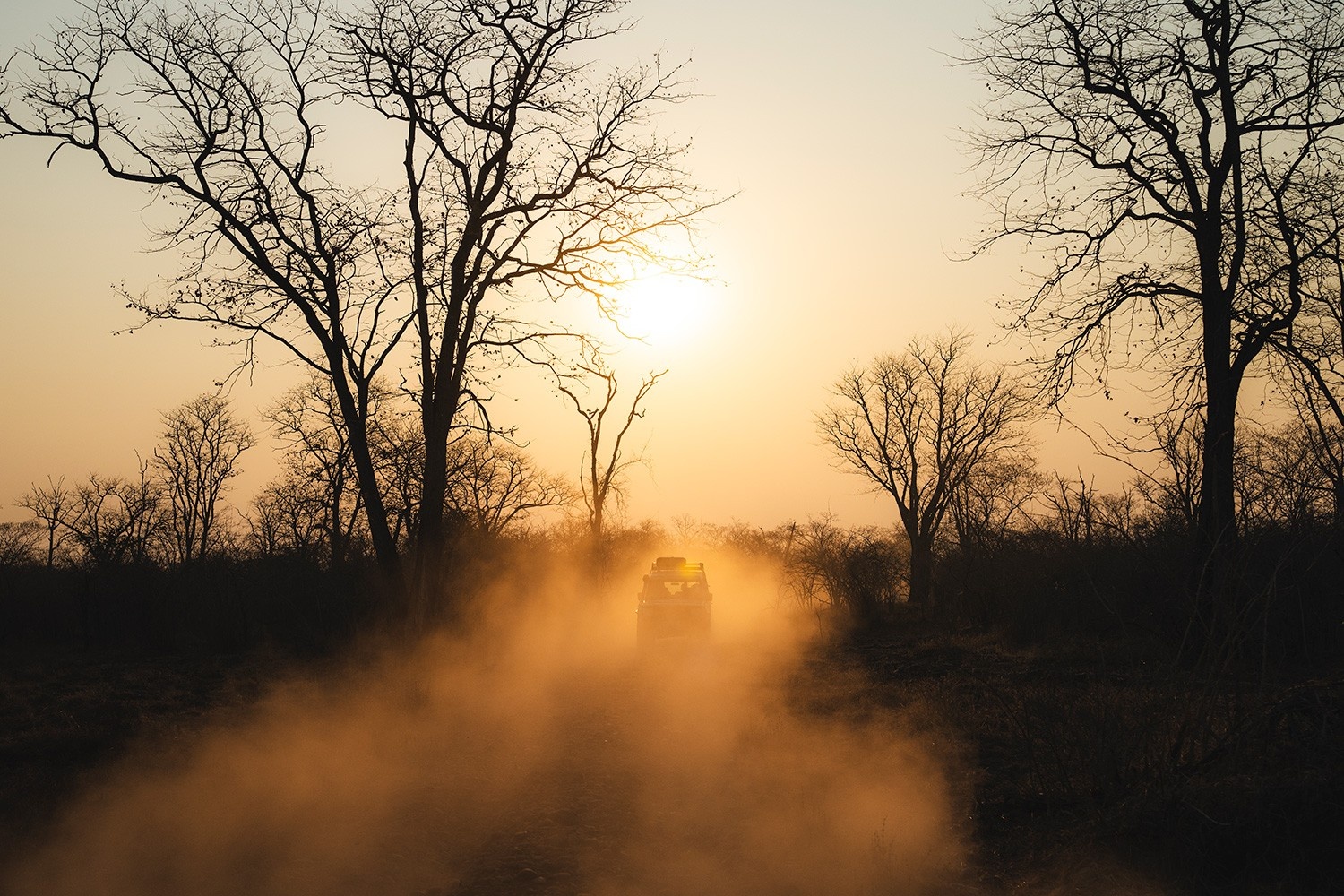
Going on safari in Nsumbu National Park. Courtesy of Jonathan Skinner
As the small plane descended through the mist, Lake Tanganyika emerged below us, its glassy surface rippled by rain. I could see the airstrip beneath, damp and uneven. Our pilot came in low, circling the rain-soaked strip of earth, inspecting its pebble-strewn, muddy surface for stray wildlife or potholes. A troop of baboons looked skywards, registering the plane, before scampering off towards the tree line. Runway clear, we came in to land at one of the remotest bush airstrips I’d ever visited.
On the northernmost tip of Zambia and along the southern shores of Lake Tanganyika, lies a famously wild landscape: Nsumbu National Park. Part of the greater Nsumbu-Mweru ecosystem, wildlife once ranged here in great numbers. But the demand for ivory, political instability in neighboring Congo, and decades of rampant poaching for game meat, predominantly with deadly wire snares that killed indiscriminately, had decimated the area’s animal populations. Many species were completely eradicated from the area, including the total loss of leopards, rhinos, and lions.
For nearly a decade, the roar of lions was absent from Nsumbu, and with the predators gone, the delicate balance of the ecosystem unraveled. But at the end of 2024, that silence would be broken.
Bringing Nsumbu Back to Life
I’ve traveled to this remote corner of Zambia to witness a rare conservation success: the return of lions to Nsumbu National Park. But before the predators could reclaim their place, the park’s food chain had to be rebuilt — starting with the restoration of local wildlife populations.
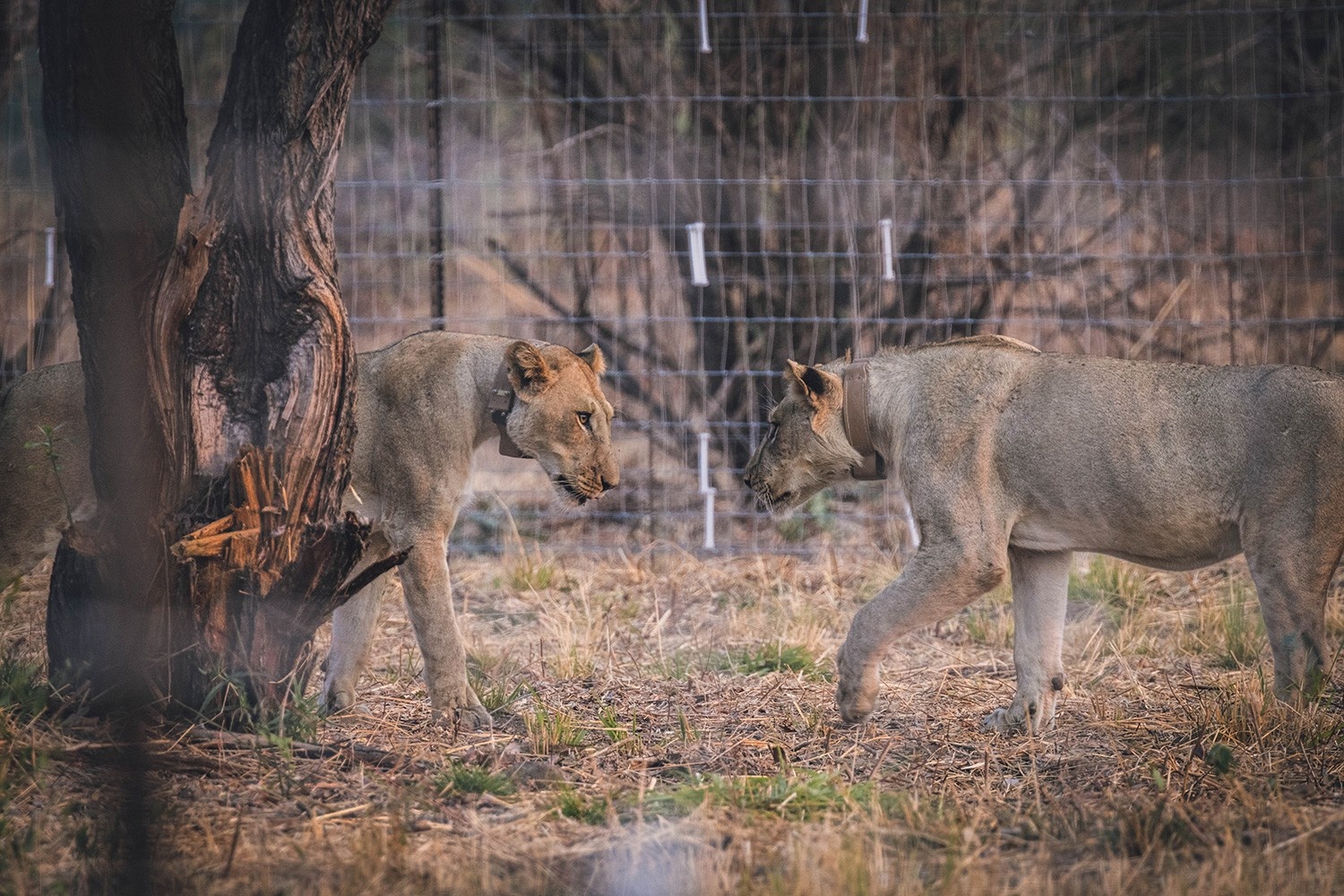
The new arrivals acclimate to their new home. Courtesy of Mana Meadows
With 20 national parks and 36 Game Management Areas (GMAs), Zambia’s protected wildlife conservation spaces are some of the largest in Africa, accounting for around 30% of the country’s total land mass. Faced with the enormous cost of managing and protecting these areas, the Zambian government entered into a long-term conservation partnership with the Frankfurt Zoological Society to manage Nsumbu National Park, and in 2017, the Nsumbu Tanganyika Conservation Programme (NTCP) was formed.
Under the NTCP, efforts to revive the park began in earnest. Anti-poaching patrols ramped up, thousands of wire snares were removed from the bush, and dozens of poachers were apprehended. As pressure on the ecosystem eased, Nsumbu’s wildlife — remarkably resilient — began to rebound.
The Return of the Lions
Today, elephants roam the park once again, joined by healthy populations of antelope, bushpig, warthog, and other wildlife. In 2021, conservationists translocated 200 buffalo and 48 zebra to Nsumbu—both to strengthen existing populations and to lay the groundwork for a long-term goal: the reintroduction of lions, which rely on these species as key prey. By September 2024, the park was finally ready. The lions were coming back.
Their return marked more than the reappearance of a single species. It symbolized the restoration of an entire ecosystem—and reaffirmed the park’s ecological and cultural importance to nearby communities. The reintroduction effort was the culmination of years of recovery: ecosystem restoration, anti-poaching work, community engagement, and meticulous planning by Zambia’s Department of National Parks and Wildlife and the NTCP, with technical support from the Zambian Carnivore Programme and funding from the Lion Recovery Fund.
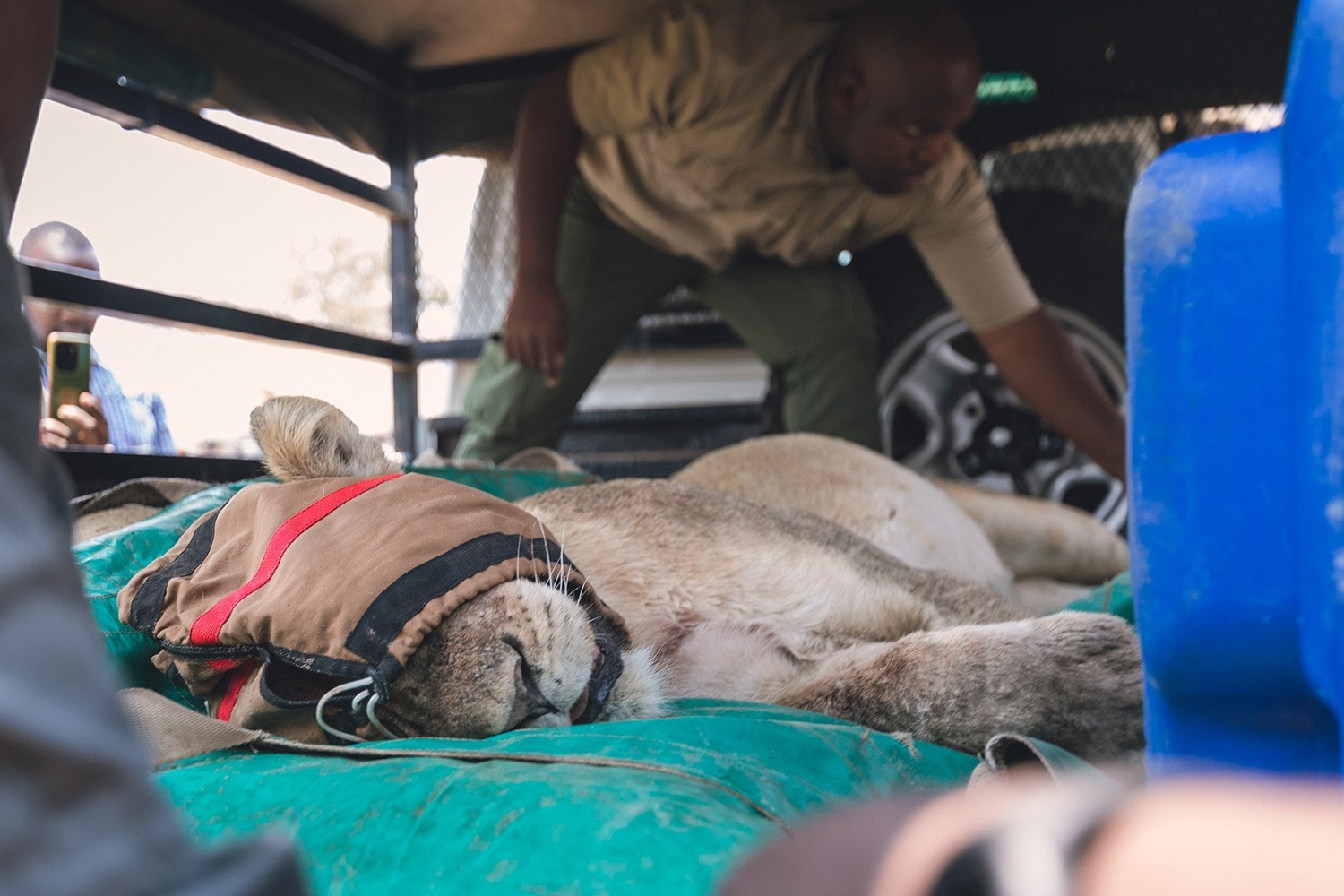
Transporting the lions to Nsumbu National Park. Courtesy of Mana Meadows
Less than three months after the lions’ release, I found myself bouncing along a dirt track in a game vehicle, heading out with the scouts to track them. Standing in the back, Innocent Siame raised a VHF receiver, listening for the signal from a GPS collar. The beeping was faint at first, then grew steadily louder.
And there they were — feeding on a freshly killed puku. It was a quiet, powerful moment. The lions were here, and they were home.
How to Rethrone An Apex Species
Reintroducing apex predators is never simple. Every step had to be carefully planned to ensure the lions’ survival in their new home. After consulting lion experts and engaging local communities, NTCP built a partial fence along one edge of the park to reduce the risk of human-wildlife conflict.
Three lions — two females and a male from a different pride — were selected from North Luangwa National Park, about 250 miles away. Sedated and flown in to minimize stress, they were placed in a secure boma at Nsumbu, where they spent several weeks adjusting to their surroundings. Fitted with GPS collars and given time to bond, the lions gradually acclimated to their new home—an essential step, as social cohesion is key to their survival in the wild.
When the enclosure gates finally opened, the lions stepped into Nsumbu and into a new chapter for the park. Their release was more than a conservation milestone — it symbolized species resilience, community collaboration, and ecological renewal.
“This is just the beginning,” says Sam Chella, Senior Ranger at Nsumbu. “Lions play a critical role in keeping the ecosystem in balance. If they thrive, the entire park benefits—from the smallest insects to the largest mammals.”
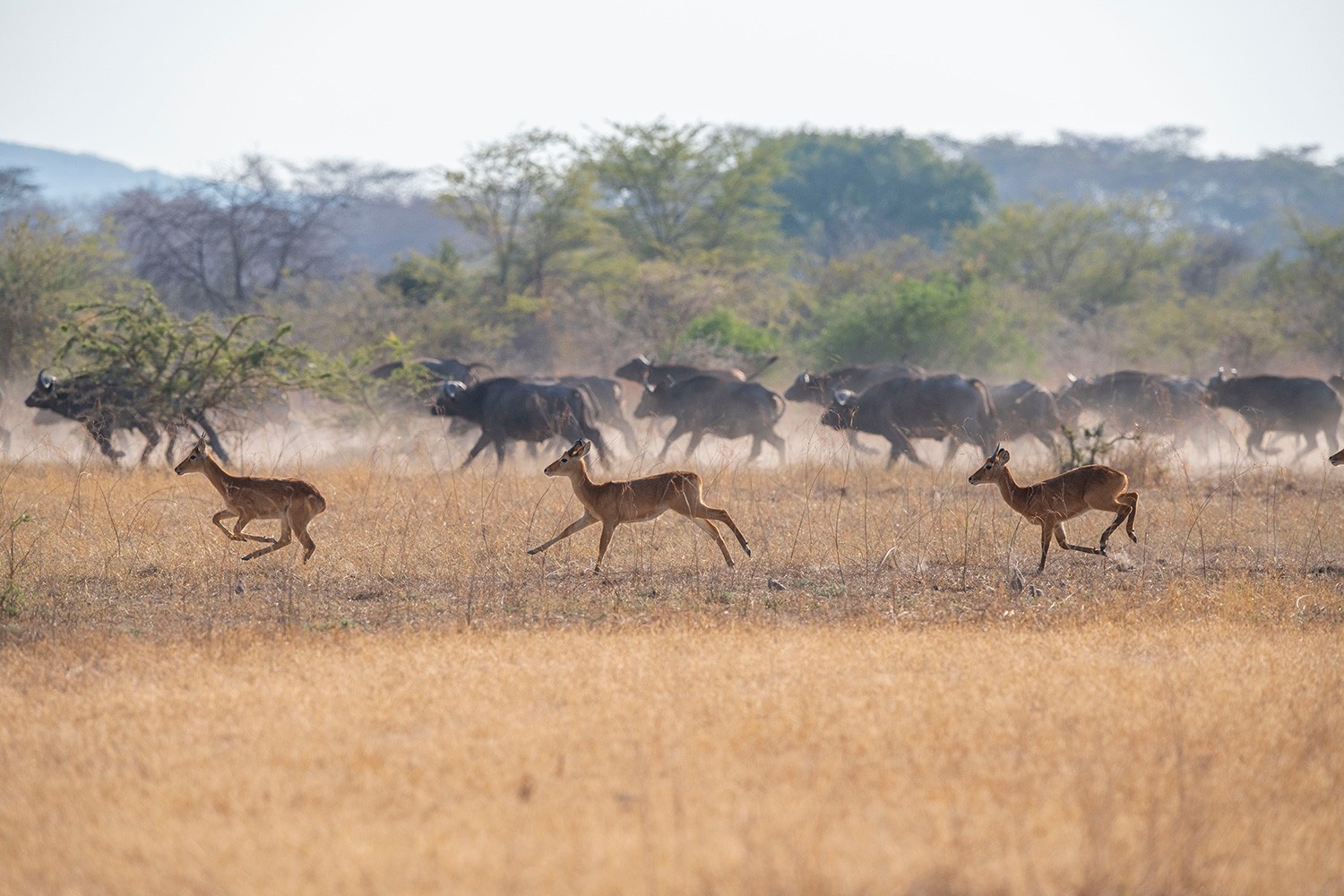
Thanks to conservation efforts, wildlife now abounds in Nsumbu National Park. Courtesy of Daniel Rosengren
The Pride of Nsumbu
For the communities around Nsumbu National Park, the return of lions carries deep significance. The Nsama Chiefdom — whose people have lived near the park for generations and whose clan name, Abashimba, means “Clan of the Lion” — revere lions as symbols of strength and leadership. Their reappearance has rekindled cultural pride and strengthened local appreciation for wildlife.
The lions also bring economic promise. “We see this as a blessing,” says Chanda Mwansa, a local fisherman. “The park is coming back to life. If more visitors come, it will help our businesses — people will need guides, food, and places to stay. This is good for all of us.”
More than a conservation milestone, the lions’ return shows how nature rebounds when given the chance — and what’s possible through collaboration, commitment, and community leadership. For now, the sound of a lion’s roar signals something rare: real, tangible progress.
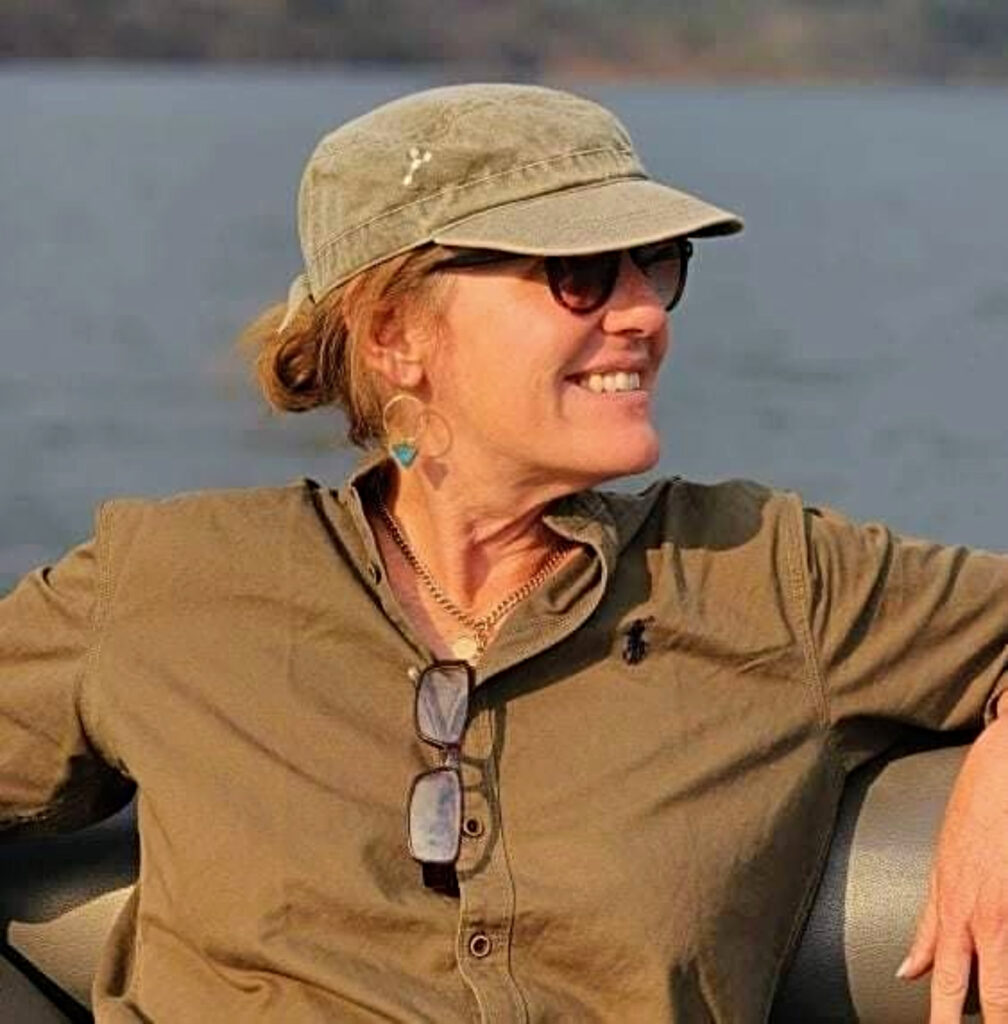
Travel writer, mountain guide, yoga teacher, trail runner and mother, Sarah Kingdom was born and brought up in Sydney, Australia. Coming to Africa at 21 she fell in love with the continent and stayed. Sarah guides on Kilimanjaro several times a year, and has lost count of how many times she has stood on the roof of Africa. She has climbed and guided around the world and now spends most of her time visiting remote places in Africa. When she is not traveling she runs a cattle ranch in Zambia with her husband. Follow Sarah on IG @sarah_kingdom_travels.
North Stars: Community Support, Diversity & Inclusion, Wildlife Ecosystems


